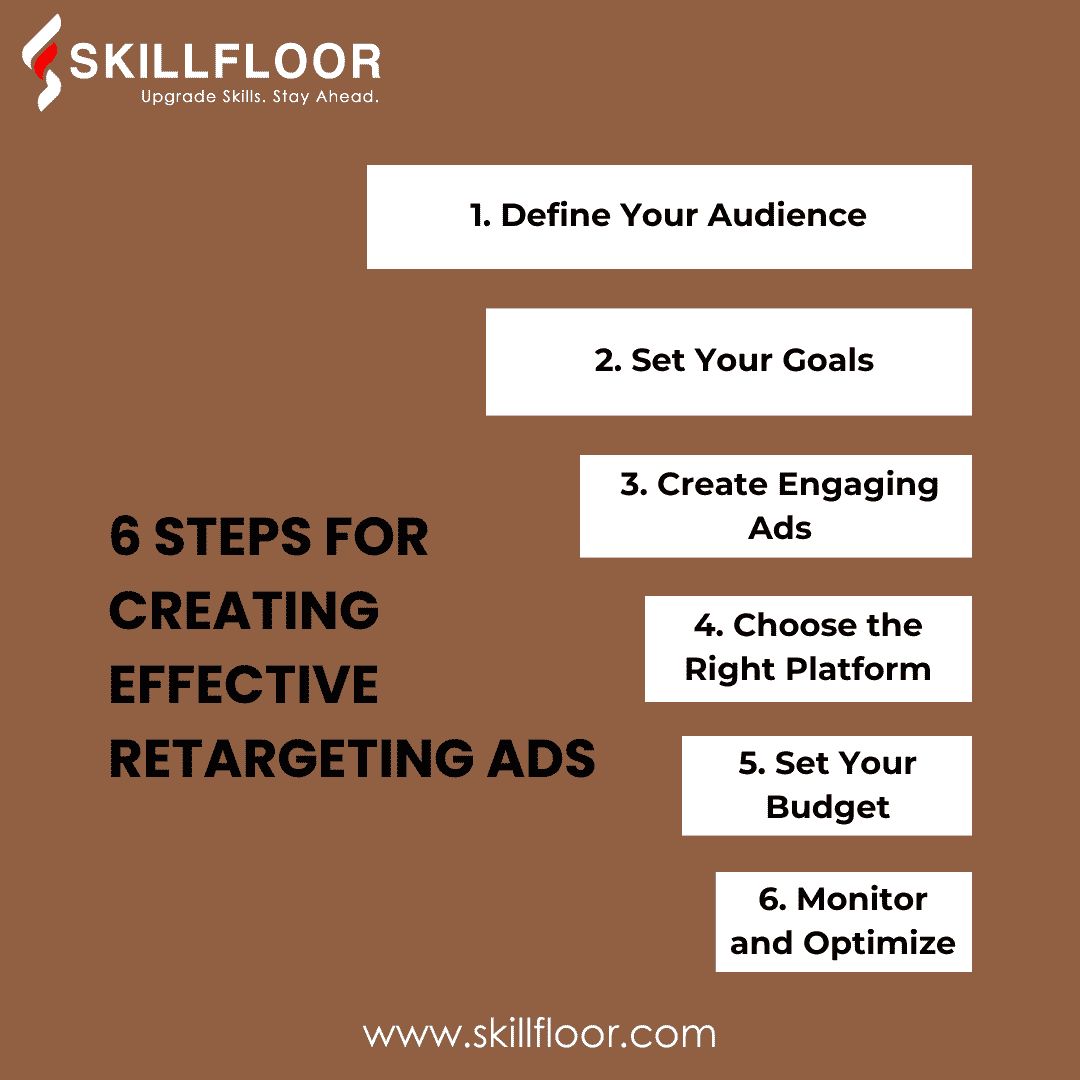What Are Retargeting Ads and How They Work
Learn what retargeting ads are, how they work, and their benefits for boosting conversions and engaging customers effectively.

Have you ever observed that after looking through an internet product, advertisements for the same thing appear wherever you go? This isn't a coincidence; retargeting ads are a cunning digital marketing tactic. These advertisements are made to track you while you browse the internet, gently reminding you of items you have expressed interest in and guiding you to finish the transaction. Staying at the forefront of prospective clients' minds is a wise strategy.
Retargeting ads are commonplace, yet many consumers are still unaware of what they are or how they operate. They may be curious as to why they keep seeing the same advertisements or whether their privacy is in danger. This ignorance may cost firms the opportunity to implement an effective digital marketing plan. Retargeting keeps potential buyers interested while increasing purchases. For businesses trying to have a more powerful online presence, knowing how it operates might open up new growth prospects.
What Are Retargeting Ads?
Retargeting ads are a kind of internet advertising that you may use to get back in touch with visitors to your website who left without buying anything. As those prospective clients continue to browse the internet, they assist in keeping your goods or services in the forefront of their minds.
Retargeting ads utilize tracking cookies to follow website visitors across social media and other websites. These advertisements nudge viewers to come back and finish their purchase by reminding them of the item they were considering.
Reaching those leads who have previously expressed interest in your company using this effective digital marketing strategy may result in a notable improvement in conversion rates. Businesses may increase sales and overall engagement by carefully placing Retargeting Ads to keep in touch with potential consumers.
What Are the Benefits of Retargeting Ads?
-
Reconnect with Lost Visitors: With the help of retargeting ads, companies may get in touch with website visitors who abandoned their carts, giving them another opportunity to interact and raise the possibility that they will make a purchase.
-
Improve Brand Recall: You may ensure that potential buyers remember your products or services when they surf the web by employing Retargeting Ads to greatly increase brand recall.
-
Maximize Marketing Efficiency: Retargeting ads increase the effectiveness of your marketing budget by concentrating on customers who have already expressed interest in your company, hence increasing the likelihood that you will close a deal.
-
Enhance Customer Engagement: By providing users with tailored advertisements based on past interactions, these campaigns improve customer engagement by enticing users to return to your website and go on with their customer journey.
-
Boost Conversion Rates and ROI: Because retargeting advertisements concentrate on warm leads, they are very economical and increase conversion rates, which improves the total return on investment of your marketing campaigns.
How Do Retargeting Ads Work?
When a person visits your website, little data files known as cookies are loaded onto their browser and used to power retargeting ads. These cookies enable advertisements to "follow" users around on other websites, serving as a reminder of your offerings.
Retargeting Ads appear when people leave your website without buying anything. Subsequently, these advertisements surface on other platforms such as social media or news websites, compelling consumers to revisit and finalize the activity they initiated, whether it is making a purchase or registering.
Cookies and tracking pixels are used by retargeting ads to follow users throughout the internet. Cookies are little data files that are kept in a user's browser, whereas tracking pixels are tiny, invisible images inserted on websites. When combined, they enable advertisements to "follow" consumers throughout other websites, keeping your brand visible and current and boosting the likelihood that they will return.
Why Retargeting Ads Are So Important
-
Boost Conversion Rates: Retargeting advertisements enable companies to get in touch with website visitors who abandoned their carts, offering them another opportunity to interact and complete a transaction and boosting overall conversion rates.
-
Increase Brand Awareness: By continuously displaying your goods or services to people on different websites, these advertisements raise brand recognition and keep your company in the forefront of prospective consumers' minds.
-
Target Interested Audiences: By focusing on individuals who have previously expressed interest in your company, retargeting ads help you increase the effectiveness and targeting of your marketing campaigns and improve customer engagement.
-
Enhance Customer Journey: Retargeting ads help you enhance the customer experience by encouraging users to return and finish the actions they started on websites and social media.
-
Maximize Return on Investment (ROI): Retargeting advertisements have the potential to optimize your marketing campaigns' return on investment (ROI) by leveraging warm leads that have a higher likelihood of becoming paying clients.
Differences between Retargeting and Remarketing:
|
Point of Comparison |
Retargeting |
Remarketing |
|
Definition |
Retargeting uses ads to target users who have visited a website but didn't convert. |
Remarketing focuses on re-engaging past customers via email campaigns. |
|
Medium |
Primarily uses display ads across different websites and social platforms. |
Mainly uses email to reach out to customers who have interacted before. |
|
Audience Targeting |
Targets new visitors or users who haven’t converted yet. |
Targets existing customers who have purchased or engaged before. |
|
Common Platforms |
Utilizes ad networks like Google Ads, Facebook Ads, etc. |
Commonly used through email platforms and CRM systems. |
|
Goal |
Aims to convert first-time visitors into customers. |
Aims to re-engage past customers or inactive users for repeat business. |
Best Platforms for Running Retargeting Ads
-
Google Ads: Among the most often used platforms for retargeting ads is Google Ads, which gives companies access to the Google Display Network and lets them reach people on a variety of websites.
-
Facebook Ads: By utilizing its sizable user base, Facebook adverts provide effective retargeting solutions, allowing companies to contact potential clients on Facebook and Instagram with customized adverts.
-
Instagram Ads: Using Instagram Ads, you can take advantage of the platform's extremely active user base to run aesthetically appealing Retargeting Ads and re-engage consumers who have connected with your business.
-
LinkedIn Ads: LinkedIn Ads are perfect for business-to-business (B2B) retargeting because they allow companies to reach out to professionals who have seen or interacted with their material in the past, which expands networking prospects.
-
Twitter Ads: Businesses may increase brand exposure by re-engaging people who have visited their site or expressed interest in particular tweets, thanks to Twitter Ads, which provide unique retargeting options.
6 Steps for Creating Effective Retargeting Ads
1. Define Your Audience
Determine who your target audience is for retargeting ads first. Now that they've expressed interest in your goods, concentrate on visitors to certain pages or cart abandoners.
Your internet marketing plan will be more laser-focused if you segment your audience. This will enable you to produce more individualized advertisements that appeal to each target population.
Ideas:
-
Pay attention to customers who leave their carts empty.
-
Send visitors to certain product pages.
-
Categorize users according to how much time they spend there.
-
Speak with former clients about cross- or up-selling opportunities.
2. Set Your Goals
Choose a goal for your retargeting ads, such as increasing sign-ups, driving sales, or pushing particular items. Your ad production and campaign execution will be guided by well-defined targets.
Your campaigns will be more successful if you have a strong digital advertising plan in place to make sure that every retargeting attempt is in line with your larger company goals.
Ideas:
-
Establish your conversion objectives (sign-ups, purchases, etc.).
-
Lower the rate of cart abandonment.
-
Establish standards for reengaging customers.
-
Analyze data to follow certain user behaviors.
3. Create Engaging Ads
Create advertisements that draw in viewers while reiterating your point. Utilize attention-grabbing imagery, potent calls-to-action, and succinct content to remind visitors of the reasons they initially expressed interest in your company.
Creative display ads make people want to visit your website again and become customers. To increase engagement, ensure that your messaging feels recognizable and unique.
Ideas:
-
To contact people on various websites, utilize Google AdWords.
-
For very graphic retargeting, go with Facebook.
-
When doing B2B retargeting advertising, use LinkedIn.
-
Try out Instagram advertisements targeting younger audiences.

4. Choose the Right Platform
Choose the most effective retargeting ads platform, such as LinkedIn, Facebook, or Google Ads. Think about the areas where you can successfully reach your audience and where they spend the majority of their time.
Your digital marketing strategy will be more successful if it reaches your target audience on the platform they are most inclined to interact with.
Ideas:
-
Showcase the goods that people looked at but didn't buy.
-
Make sure to include compelling calls to action, such as "Complete Your Purchase."
-
To encourage repeat business, provide discounts.
-
Display customized information by utilizing dynamic advertisements.
5. Set Your Budget
Set a spending limit for your campaign using retargeting ads. Since you're targeting warm leads, retargeting usually costs less money than other forms of advertising; thus, base your budget allocation on expected results.
You can ensure that your campaign stays profitable by maximizing returns and managing expenses through the optimization of your ad spend plan.
Ideas:
-
To track visitor activity, install the Facebook Pixel.
-
For improved tracking, use Google Tag Manager.
-
Divide up your audience into groups according to their actions (like page views).
-
Keep track of actions such as form submissions and sign-ups.
6. Monitor and Optimize
Monitor the effectiveness of your Retargeting Ads campaign continuously. Examine data such as click-through rates and conversions to see what is effective and then modify the strategy to achieve better outcomes.
You can increase your chances of turning leads into consumers over time by making regular adjustments to your internet advertising strategy to keep it relevant and successful.
Ideas:
-
Track conversion rates and click-through rates.
-
Find the most effective A/B ad versions by testing them.
-
Optimize according to ROI and cost-per-click figures.
-
Retarget viewers who clicked on your original retargeting advertisements.
Businesses may go out to prospective clients who have expressed interest but haven't completed a purchase by using retargeting ads. These advertisements assist in keeping your items and brand in front of them when they explore the internet. You can improve purchases, raise engagement, and nudge people back to your website using Retargeting Ads. Focusing on those who are already acquainted with your company makes this technique economical and successful. It's a wise strategy for any business trying to increase its internet visibility and turn more visitors into devoted patrons.




























































